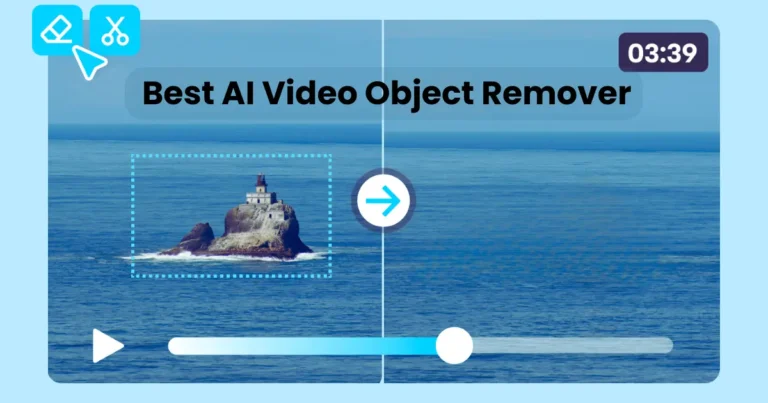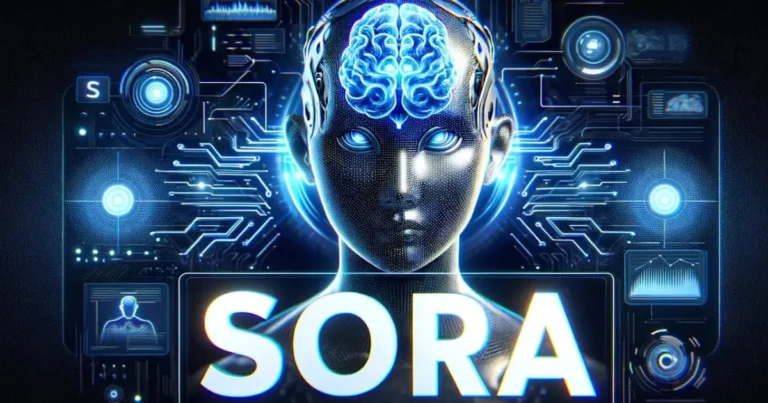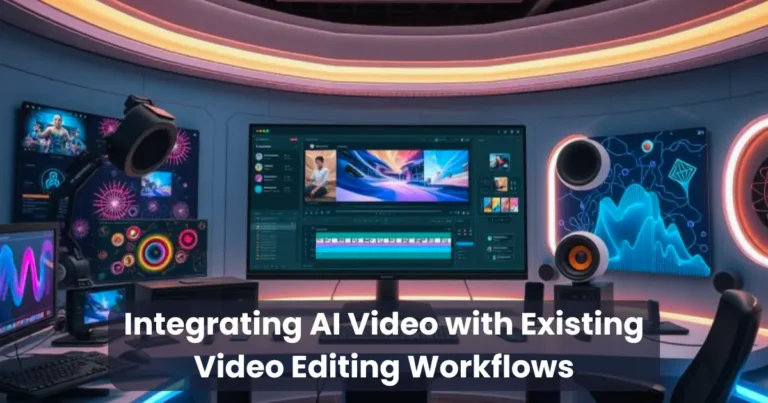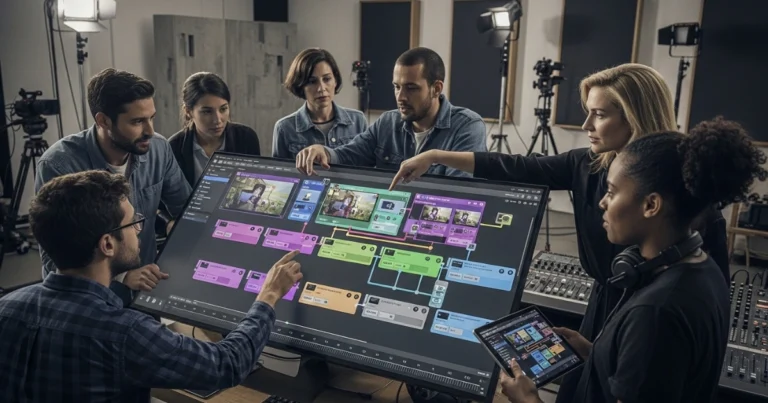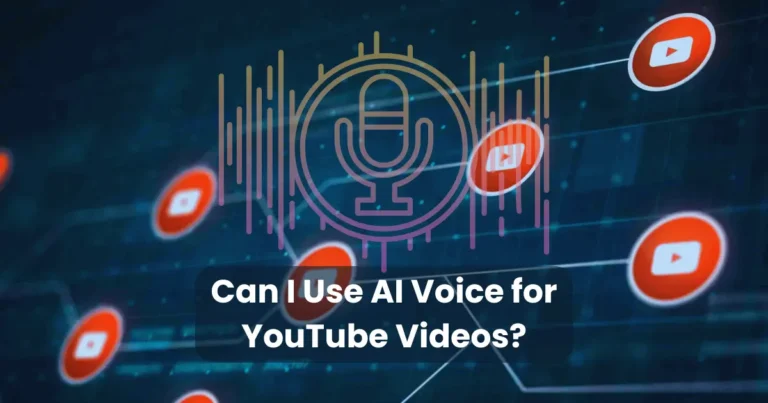Open Source AI Video Analysis
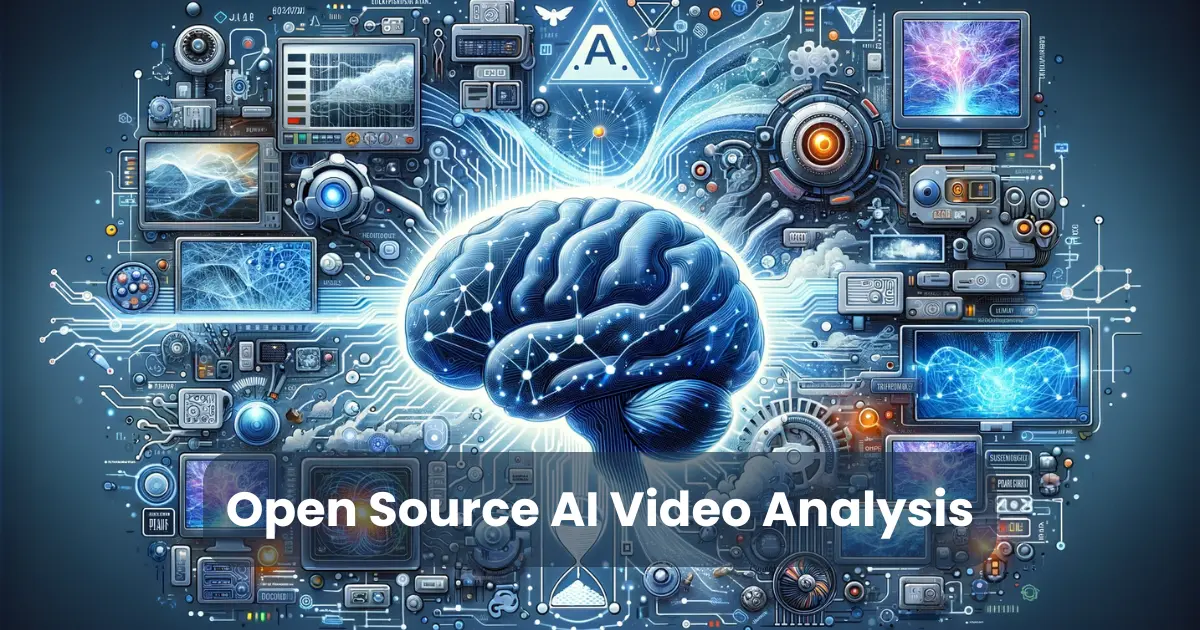
Contents
In recent years, open source AI video analysis has emerged as a transformative technology that revolutionizes how we process and analyze video content. By leveraging artificial intelligence (AI), open source tools can automatically interpret video footage, extract meaningful insights, and make real-time decisions. These AI-powered solutions have opened up numerous possibilities across industries, ranging from surveillance and security to sports and healthcare.
What makes open source AI video analysis particularly appealing is the fact that it is freely available to developers and researchers, allowing them to modify and customize the software to meet their specific needs. Unlike proprietary video analysis systems, open source solutions eliminate licensing fees and provide complete transparency into the algorithms and models that drive the analysis.
With rapid advancements in machine learning, deep learning, and computer vision, the scope of open source AI video analysis continues to grow. Whether it’s analyzing facial expressions in a video, tracking objects across frames, or identifying specific behaviors, the ability to harness the power of AI in video analysis is becoming more accessible and affordable.
As video data continues to grow at an exponential rate, the need for scalable, cost-effective, and automated solutions for video analysis becomes increasingly urgent. Open source AI video analysis offers just that, enabling anyone—from small startups to large corporations—to unlock the potential hidden within video content.
Benefits of Open Source AI Video Analysis
Open source AI video analysis offers a multitude of advantages that make it an attractive choice for organizations, researchers, and developers looking to harness the power of AI in processing video data. Below are some of the key benefits of using open source AI video analysis:

1. Accessibility and Customizability
One of the most significant benefits of open source AI video analysis is the accessibility it provides. Unlike proprietary software, which is often restricted by licenses or pricing models, open source tools are freely available to anyone. This level of accessibility allows developers and businesses to experiment, learn, and innovate without worrying about licensing costs.
Moreover, open source AI video analysis tools are highly customizable. Users have the ability to modify the underlying code to suit their specific needs. For example, a developer can tweak an object detection model to focus on particular types of objects, or refine a motion-tracking algorithm to improve accuracy in challenging conditions.
2. Cost-Effectiveness and Transparency
Cost is often a major barrier for organizations when adopting advanced technologies. With open source AI video analysis, the need for expensive proprietary software is eliminated. Open source software is typically available for free, meaning businesses and developers can integrate powerful AI capabilities without incurring significant costs.
Furthermore, the transparency of open source AI video analysis is a notable advantage. Since the source code is publicly available, users can examine the inner workings of the software. This transparency helps build trust, as developers can ensure that the system operates as intended and that no hidden costs or limitations exist. Additionally, transparency makes it easier to debug, troubleshoot, and improve the system.
3. Flexibility and Community Support
Another advantage of open source AI video analysis is the support of a large and vibrant community. Open source projects often have active developer communities that contribute to the software’s continuous improvement.
In addition to this, open source AI video analysis tools often come with extensive documentation, tutorials, and forums where users can seek help and advice. This makes it easier for newcomers to adopt and learn how to use the technology effectively. Whether you are a novice or an expert, the collaborative nature of open source software allows for a wealth of knowledge and resources that can enhance the development process.
4. Scalability and Versatility
Open source AI video analysis tools are designed to be scalable, making them suitable for both small and large-scale projects. Whether you are processing a single video stream or analyzing thousands of hours of footage, these tools can scale to meet the demands of the project. The ability to scale without having to switch to more expensive proprietary solutions is a major benefit, particularly for startups and growing businesses.
In addition to scalability, open source AI video analysis is versatile. It can be applied to a variety of industries and use cases. From surveillance and security to sports analytics and medical imaging, the versatility of open source AI video analysis tools ensures that they can be adapted to meet a wide range of needs. This makes them a valuable resource for organizations in various sectors, looking to improve their video processing capabilities.
5. Innovation and Collaboration
Because open source AI video analysis encourages collaboration, it fosters a culture of innovation. Developers and researchers can contribute new ideas, algorithms, or improvements to the soft, pushing the boundaries of what is possible. This constant innovation means that open source tools stay at the cutting edge of technology, enabling users to benefit from the latest advancements in AI and video analysis.
Moreover, collaboration among developers, researchers, and industry professionals ensures that open source AI video analysis continues to evolve and adapt to the needs of different sectors. By sharing knowledge and solutions, the community helps drive advancements that would be difficult to achieve with proprietary systems, which may not prioritize community involvement or innovation.
How Open Source AI Video Analysis Works
Open source AI video analysis leverages artificial intelligence (AI) techniques such as machine learning, computer vision, and deep learning to analyze and interpret video data. This process involves the use of specialized algorithms that can identify patterns, detect objects, track movements, and even make predictions based on the content of the video. Below, we will explore the key steps and technologies behind how open source AI video analysis works.

1. Machine Learning Models for Video Analysis
At the heart of open source AI video analysis lies machine learning (ML). Machine learning algorithms are designed to learn from large datasets and make decisions based on that knowledge. For video analysis, machine learning models are trained on annotated video data to understand patterns such as movements, shapes, and behaviors.
Training a machine learning model for video analysis involves feeding it numerous examples of labeled data. For example, if the goal is to detect pedestrians in a video, the system is trained using thousands of images containing pedestrians and non-pedestrian objects. Through this training process, the algorithm learns to identify and differentiate pedestrians from other objects.
Once trained, the model can analyze video content, extracting features such as motion, shape, and texture, which are then used for various tasks like object detection, classification, or even sentiment analysis.
2. Object Detection and Tracking in Video
Object detection and tracking are two of the primary tasks in open source AI video analysis. It refers to the AI’s ability to identify and locate objects in a video stream, such as people, vehicles, or animals. Object tracking takes it a step further, maintaining the identity of the detected objects as they move across the video frames.
In object detection, algorithms use convolutional neural networks (CNNs) or other deep learning models to scan each frame of the video and identify objects of interest. Once the objects are identified, their location in the frame is marked, and the system moves on to the next frame.
Tracking these objects across frames involves creating a “track” for each identified object. This can be achieved by analyzing the movement of the object, its appearance, and its surrounding environment. The tracking process ensures that the AI system is aware of the object’s location throughout the entire video sequence, even if the object moves or becomes partially occluded.
3. Real-Time Analysis and Applications
One of the key features of open source AI video analysis is its ability to perform real-time video analysis. This means that the AI system can process video footage as it is being recorded, providing immediate insights and actions. For example, in security applications, the system can detect intruders and trigger alarms or notify security personnel in real time.
To achieve real-time analysis, the system must be optimized for efficiency, processing each video frame quickly and accurately. This often involves using high-performance computing resources, such as GPUs (Graphics Processing Units), which are particularly well-suited for the parallel processing required by AI models.
Real-time video analysis is particularly useful in scenarios where immediate action is required, such as surveillance, autonomous vehicles, or live event monitoring.
4. Deep Learning for Advanced Analysis
In addition to machine learning, open source AI video analysis often incorporates deep learning techniques. Deep learning, which is a subset of machine learning, uses artificial neural networks with many layers (hence “deep”) to model complex patterns in data. For video analysis, deep learning models, such as recurrent neural networks (RNNs) or long short-term memory (LSTM) networks, are used to process temporal data, which is crucial when analyzing video streams over time.
Deep learning can be particularly beneficial for tasks such as facial recognition, emotion detection, and action recognition. For example, AI systems can be trained to identify specific actions, like someone sitting, standing, or waving, by analyzing the sequence of movements over time.
5. Post-Processing and Insights
Once the initial analysis is performed on the video, the results are typically processed and presented in a format that is easy for users to interpret. This may include generating reports, alert notifications, or visual overlays on the video itself.
For example, in a security application, the system might tag detected objects, such as faces or vehicles, and provide a timeline of when those objects appeared. In sports analytics, the system might track player movements and generate performance statistics, such as distance covered or average speed.
6. Integration with Other Systems
An essential aspect of open source AI video analysis is its ability to integrate with other systems and technologies. This could include integrating the analysis with video surveillance systems, automated alert systems, or even cloud-based platforms where the data can be stored and processed remotely.
Integration with other systems enhances the capabilities of AI video analysis, enabling more comprehensive solutions. For instance, combining AI video analysis with natural language processing (NLP) could lead to the creation of systems that not only detect objects but also provide contextual information about the video content, such as generating automatic captions or transcripts.
Popular Open Source AI Video Analysis Tools
There are several open source AI video analysis tools available that allow developers, researchers, and businesses to harness the power of artificial intelligence in processing video content. These tools offer various features such as object detection, tracking, facial recognition, and action recognition. Below are some of the most popular and widely used open source AI video analysis tools:

1. OpenCV (Open Source Computer Vision Library)
OpenCV is one of the most well-known open source libraries used for computer vision and video analysis. It provides a comprehensive set of tools and functions for tasks such as image processing, feature extraction, object detection, and motion tracking. OpenCV can be used with languages such as Python, C++, and Java, making it accessible for a wide range of developers.
- Features:
- Object detection using pre-trained models
- Motion detection and tracking
- Face recognition
- Image filtering and transformation
- Support for real-time video processing
2. TensorFlow
TensorFlow, developed by Google, is an open source machine learning library that is widely used for deep learning applications. While it is known for its use in a variety of domains, TensorFlow also provides powerful tools for video analysis, particularly in tasks such as object detection, action recognition, and facial recognition.
- Features:
- TensorFlow Object Detection API for detecting objects in videos
- Video classification using deep learning models
- Support for building custom models with convolutional and recurrent neural networks
- Integration with Keras for simplified model building
3. Darknet (YOLO – You Only Look Once)
Darknet is an open source neural network framework written in C and CUDA, which is most famous for its implementation of the YOLO (You Only Look Once) algorithm. YOLO is a real-time object detection system that can detect multiple objects in videos and images with remarkable speed and accuracy.
- Features:
- Real-time object detection
- Pre-trained YOLO models for general object detection
- High performance for real-time video analysis
- Supports GPU acceleration for faster processing
4. Detectron2
Developed by Facebook AI Research (FAIR), Detectron2 is an open source library that provides state-of-the-art algorithms for object detection and segmentation. It is a successor to the original Detectron and supports tasks such as instance segmentation, keypoint detection, and panoptic segmentation in videos.
- Features:
- Advanced object detection and segmentation
- Support for instance segmentation and keypoint detection
- Built-in support for Mask R-CNN and Faster R-CNN
- Pre-trained models available for various tasks
5. MediaPipe
MediaPipe, developed by Google, is a cross-platform open source framework for building real-time media processing pipelines. It provides ready-to-use solutions for tasks such as face detection, hand tracking, pose estimation, and object detection, making it ideal for video analysis applications that require real-time interaction.
- Features:
- Hand tracking and gesture recognition
- Face and facial landmark detection
- Pose estimation (tracking human body movements)
- Object detection and tracking
- Real-time video processing
6. FFmpeg
FFmpeg is an open source multimedia framework that can handle video, audio, and other multimedia files and streams. While it is primarily used for video processing, FFmpeg also supports video analysis by enabling users to extract features, frames, and metadata from video files.
- Features:
- Video and audio conversion
- Frame extraction and manipulation
- Video compression and encoding
- Metadata extraction
7. PyTorch
PyTorch is another popular open source deep learning framework that supports video analysis applications. It is known for its dynamic computation graphs and ease of use, making it a favorite among researchers. With PyTorch, you can build custom deep learning models for tasks such as video classification, object detection, and action recognition.
- Features:
- Dynamic neural networks for real-time video analysis
- Integration with torchvision for pre-trained models
- Support for video classification and object tracking
- Seamless integration with other tools like OpenCV
8. VOSK
VOSK is an open source toolkit for speech recognition and video analysis. While its main focus is on speech recognition, VOSK can also be used for video analysis by extracting and transcribing speech from video content, which is particularly useful for applications like video surveillance or media content analysis.
- Features:
- Speech-to-text conversion in real time
- Support for multiple languages
- Low resource consumption for edge devices
- Integration with other AI models for video processing
Applications of Open Source AI Video Analysis
Open source AI video analysis tools are transforming various industries by enabling efficient and intelligent analysis of video data. By leveraging machine learning, computer vision, and deep learning, these tools can detect objects, track movements, recognize actions, and extract meaningful insights from videos. Below, we explore some of the most impactful applications of open source AI video analysis across different sectors.

1. Security and Surveillance
One of the most common applications of open source AI video analysis is in security and surveillance. By automating the process of analyzing video feeds, AI tools can provide real-time detection of suspicious activity, reduce the need for human intervention, and improve response times.
- Object Detection: AI systems can identify and track people, vehicles, or objects in surveillance videos, helping security personnel monitor large areas more effectively.
- Intrusion Detection: AI algorithms can detect unauthorized entry into restricted zones or unusual behavior, triggering alarms or notifying security staff.
- Facial Recognition: Open source AI tools can be used to identify individuals from video footage, aiding in access control and identifying persons of interest in security scenarios.
2. Retail and Customer Insights
In the retail industry, open source AI video analysis can be used to track customer behavior, optimize store layouts, and improve overall customer experience.
- Foot Traffic Analysis: AI tools can analyze video feeds from in-store cameras to track customer movements and identify the most visited areas of a store. This data can be used to optimize store layouts and product placement.
- Customer Sentiment: AI systems can assess facial expressions and body language to gauge customer emotions and reactions to products or services.
- Checkout Monitoring: AI-powered video analysis can monitor checkout lines and detect any anomalies, such as theft or fraudulent transactions.
3. Healthcare and Patient Monitoring
In healthcare, open source AI video analysis tools are increasingly being used for monitoring patients and improving care delivery.
- Patient Monitoring: AI systems can analyze video footage to monitor the movements of patients, especially in critical care units. This can help track patient behavior, detect falls, and alert medical staff in case of emergencies.
- Telemedicine: AI video analysis can be used in telemedicine consultations to analyze patient gestures, facial expressions, and body movements to assess their condition more effectively.
- Post-Surgery Recovery: For post-surgery recovery, AI tools can analyze video data to track a patient’s rehabilitation progress by assessing their physical movements and providing feedback to healthcare professionals.
4. Autonomous Vehicles
Open source AI video analysis plays a critical role in the development of autonomous vehicles, enabling them to perceive and understand their surroundings in real time.
- Object Detection and Tracking: AI systems in self-driving cars use video analysis to detect and track other vehicles, pedestrians, cyclists, and obstacles, helping the car navigate safely.
- Lane Detection: AI video analysis can be used to identify lane markings and assist in lane-keeping, providing better control and reducing the risk of accidents.
- Traffic Sign Recognition: AI-powered systems can recognize traffic signs and road conditions, allowing the autonomous vehicle to adjust its behavior accordingly.
5. Sports Analytics
AI video analysis is revolutionizing the world of sports by providing coaches, players, and analysts with advanced insights into player performance and game strategies.
- Player Tracking: AI tools can track player movements during games, providing metrics such as speed, distance covered, and positioning. This data is invaluable for improving training and strategy.
- Game Analysis: By analyzing game footage, AI can identify key moments, such as goals, assists, and fouls, and generate statistics to help teams understand their performance.
- Injury Prevention: AI video analysis can assess players’ movements and detect signs of fatigue or incorrect posture, helping coaches prevent injuries and optimize training sessions.
6. Entertainment and Media
In the entertainment industry, open source AI video analysis is increasingly being used to enhance content creation, distribution, and personalization.
- Video Editing and Post-Production: AI video analysis tools can automate tasks such as scene detection, object removal, and color correction, speeding up the editing process.
- Content Moderation: AI-powered video analysis can automatically flag inappropriate content in videos, such as violence or explicit material, ensuring compliance with content guidelines.
- Recommendation Systems: AI video analysis can be used to analyze viewing patterns and recommend videos to users based on their preferences and behavior, enhancing user experience on platforms like YouTube and Netflix.
Challenges in Open Source AI Video Analysis
While open source AI video analysis presents vast opportunities, it also faces several challenges that hinder its widespread adoption and effectiveness. These challenges span technical, ethical, and practical issues that need to be addressed for the technology to reach its full potential. In this section, we explore the key challenges in open source AI video analysis.

1. Data Privacy and Security
One of the most significant challenges of open source AI video analysis is ensuring the privacy and security of the data being analyzed. Video data can contain sensitive information, and the misuse or unauthorized access to this data can lead to serious privacy violations.
- Unauthorized Access: Open source platforms may have security vulnerabilities that could allow unauthorized access to video data, leading to potential leaks or breaches.
- Sensitive Information: Video footage can reveal sensitive details, such as personal information, which needs to be protected from misuse. Ensuring that AI systems respect privacy laws like GDPR is essential for compliance and user trust.
- Encryption: While encryption can help secure data during analysis, not all open source AI tools have robust encryption features, which can pose a risk for sensitive applications like surveillance or healthcare.
2. Accuracy and Reliability
The accuracy and reliability of open source AI video analysis tools can sometimes fall short, especially when dealing with complex scenarios or low-quality video footage.
- False Positives and Negatives: AI systems might incorrectly identify objects, actions, or events, leading to false alarms or missed detections. This is particularly concerning in critical applications such as security surveillance, where errors can lead to dangerous outcomes.
- Environmental Variability: AI systems often struggle to perform well in varied lighting conditions, angles, or video qualities. For example, low-resolution footage or poor lighting can impair object detection, motion tracking, and other analysis tasks.
- Generalization: Some AI models may work well on specific datasets but fail to generalize to new, unseen data. This can limit the applicability of open source AI video analysis tools across different industries or environments.
3. Computational Resources
Running AI models for video analysis often requires significant computational resources, which can be a barrier for many users, especially those working with large datasets or real-time analysis.
- High Processing Power: Video analysis involves processing large amounts of data in real time, requiring powerful hardware such as GPUs. This can lead to high costs, making it challenging for small businesses or individual developers to deploy AI video analysis solutions effectively.
- Storage Demands: Video files are typically large, and storing vast amounts of video data for analysis can consume significant storage space. Open source AI tools need efficient data management systems to handle and store video footage without compromising performance.
- Energy Consumption: High computational demands also lead to increased energy consumption, which can contribute to environmental concerns, particularly in large-scale deployments.
4. Bias and Fairness
AI systems, including those used for video analysis, are susceptible to bias, which can lead to unfair or discriminatory outcomes. This is a particularly pressing issue in areas like facial recognition, where biased algorithms can misidentify individuals or produce false positives, disproportionately affecting certain demographic groups.
- Data Bias: AI models are often trained on biased datasets that do not represent the diversity of real-world scenarios. For instance, facial recognition systems have been shown to have lower accuracy for people of color, women, and younger individuals.
- Algorithmic Bias: Even if the training data is diverse, the algorithms themselves may still exhibit biases due to their design or the features they prioritize, leading to inaccurate or unfair results.
- Ethical Implications: Bias in AI video analysis can have significant ethical implications, especially when it is used in sensitive applications like law enforcement, hiring, or healthcare.
5. Scalability Issues
As the volume of video data increases, scaling open source AI video analysis systems to handle larger datasets can become a significant challenge.
- Data Processing Bottlenecks: Processing large-scale video data can lead to performance bottlenecks, slowing down analysis and decision-making. This is particularly problematic in applications that require real-time analysis, such as surveillance or autonomous vehicles.
- Infrastructure Requirements: Scaling AI video analysis tools often requires robust infrastructure, including distributed computing and cloud storage, which can be expensive and complex to manage.
- Model Efficiency: Scaling AI models to handle large datasets or real-time video feeds without compromising accuracy or speed is a difficult challenge. Open source AI tools may need continuous updates to maintain efficiency as the demand for larger-scale applications grows.
6. Integration with Existing Systems
Integrating open source AI video analysis tools into existing systems can be difficult due to compatibility issues and the need for customization.
- Legacy Systems: Many organizations use legacy systems that may not be compatible with modern AI tools, requiring significant time and resources to update or replace them.
- Custom Integration: Open source tools may not always come with ready-made integrations for specific industries, meaning that developers need to create custom solutions to make the tools work with existing software and hardware.
- User Expertise: To integrate AI video analysis tools effectively, users often need advanced technical skills in programming, machine learning, and video processing, which may be a barrier for organizations without in-house expertise.
The Future of Open Source AI Video Analysis
The future of open source AI video analysis holds immense promise, driven by advancements in technology, increasing adoption, and continuous innovations in the field. As the demand for real-time video analytics across industries grows, open source AI video analysis is poised to revolutionize various sectors, from security to entertainment. In this section, we explore the potential developments, trends, and future directions for open source AI video analysis.

1. Advancements in Deep Learning Models
Deep learning, particularly neural networks, has revolutionized AI, and the future of open source AI video analysis will be heavily influenced by advancements in deep learning models.
- Improved Accuracy and Robustness: Future AI models will become more accurate in detecting and analyzing complex patterns in video data. Enhanced architectures, such as Transformers and attention mechanisms, will enable AI systems to better interpret the context of scenes, actions, and objects within videos.
- Transfer Learning and Fine-Tuning: Open source AI video analysis tools will increasingly adopt transfer learning, where models trained on large, generic datasets are fine-tuned for specific use cases. This approach will help improve the performance of video analysis systems without needing large, domain-specific datasets.
- Self-Supervised Learning: Another promising advancement is self-supervised learning, where AI models learn to understand video content without extensive human-labeled data. This could lead to the development of more efficient, adaptable systems for video analysis that require fewer resources to train.
2. Integration of Edge Computing for Real-Time Analysis
The integration of edge computing into open source AI video analysis will play a crucial role in the future of this technology, particularly for real-time applications.
- On-Device Processing: Edge computing allows data to be processed closer to its source, such as on cameras, sensors, or other devices, rather than sending it to a centralized server. This reduces latency, making real-time video analysis more feasible and efficient.
- Reduced Bandwidth Use: By processing data locally, edge computing also reduces the amount of bandwidth required for video transmission. This is particularly beneficial for environments with limited or costly network connectivity, such as remote areas or mobile devices.
- Improved Privacy: With edge computing, sensitive data can be analyzed on the device without needing to send it to the cloud, enhancing privacy and security. This is a key consideration for industries dealing with confidential or sensitive information.
3. Collaboration and Ecosystem Development
As open source communities continue to grow, the development of a collaborative ecosystem will accelerate the evolution of AI video analysis tools.
- Community-Driven Innovation: Open source projects benefit from contributions from developers, researchers, and organizations worldwide. In the future, we can expect even more collaboration, resulting in rapid advancements in AI video analysis models and frameworks.
- Interoperability and Standards: The future will see the establishment of interoperability standards, ensuring that different open source AI video analysis tools and platforms can work seamlessly together. This will help foster a more integrated ecosystem of AI tools that can be used across different industries and applications.
- Cross-Disciplinary Approaches: Collaboration between AI experts, domain specialists, and ethical researchers will ensure that open source AI video analysis solutions are developed with a focus on fairness, inclusivity, and responsible use. This holistic approach will allow for more effective solutions that address real-world challenges.
4. Ethical and Transparent AI Development
As AI technology becomes more integrated into video analysis systems, ensuring ethical development and use will be crucial to the future of open source AI video analysis.
- Bias Mitigation: Future advancements in open source AI video analysis will prioritize reducing bias in video analysis algorithms, particularly in sensitive applications like surveillance and facial recognition. Techniques such as adversarial training and bias auditing will become common to ensure fairness in AI systems.
- Explainability: Ensuring transparency and explainability in AI decisions will become more important. Open source projects will likely adopt explainable AI (XAI) techniques to provide insights into how AI models make decisions. This is particularly crucial for industries like healthcare, law enforcement, and finance, where decisions based on AI video analysis must be understandable and justifiable.
- Regulations and Compliance: Governments and regulatory bodies are increasingly focusing on AI ethics and regulation. Open source AI video analysis tools will need to adapt to comply with new privacy laws, such as GDPR, and ethical standards. As the technology matures, there will be a greater emphasis on creating open-source solutions that are both innovative and ethical.
5. Advanced Video Synthesis and Generation
In the future, open source AI video analysis will extend beyond merely analyzing existing video content to synthesizing and generating new video footage.
- Synthetic Video Generation: AI models will become capable of generating realistic video content based on input data. This could be used for a variety of purposes, including creating training datasets for AI models or generating content for media and entertainment.
- Video Summarization and Enhancement: AI tools will be able to automatically summarize long videos by identifying the most important moments, creating highlights, or generating concise summaries. This will be particularly useful in applications such as security surveillance, where human operators often have to sift through hours of footage.
- Augmented Reality (AR) and Virtual Reality (VR) Integration: Open source AI video analysis will also enable better AR and VR experiences by analyzing real-world video content and seamlessly integrating it into virtual environments.
6. Automation and Workforce Augmentation
As AI video analysis technology evolves, it will become more integrated into workflows, automating mundane tasks and augmenting human capabilities.
- Automated Video Editing: Open source AI tools will be used to automate video editing processes, from cutting and splicing footage to adding effects or captions. This will significantly reduce the time and effort needed to produce high-quality video content.
- Security and Surveillance Automation: AI systems will automatically detect suspicious activities or anomalies in video feeds, alerting security personnel and enabling faster responses. This will reduce the need for constant human monitoring and allow security teams to focus on more critical tasks.
- Industry-Specific Automation: In healthcare, education, and other industries, open source AI video analysis will enable automated tasks such as monitoring patient behavior, analyzing student presentations, or assessing manufacturing processes. This will increase efficiency, reduce human error, and improve overall productivity.
Conclusion
The landscape of open source AI video analysis is rapidly evolving, offering transformative potential across a variety of industries. As technology advances, the integration of deep learning, edge computing, and ethical AI practices will play pivotal roles in enhancing the capabilities of video analysis systems. These developments will lead to more accurate, real-time, and scalable solutions that benefit sectors such as security, healthcare, entertainment, and more.
However, alongside these advancements, challenges such as data privacy, scalability, and bias need to be carefully addressed to ensure responsible and fair use. The future of open source AI video analysis looks promising, with collaborative innovation driving the creation of more powerful, accessible, and ethical tools. With ongoing community support and the incorporation of cutting-edge technologies, open source AI video analysis will continue to shape the future of video content analysis, empowering businesses and individuals alike to unlock new possibilities in data-driven insights and automation.
By adopting and contributing to open source AI video analysis, we can harness its full potential to create impactful, transformative solutions while ensuring that the technology is developed with transparency and responsibility.


